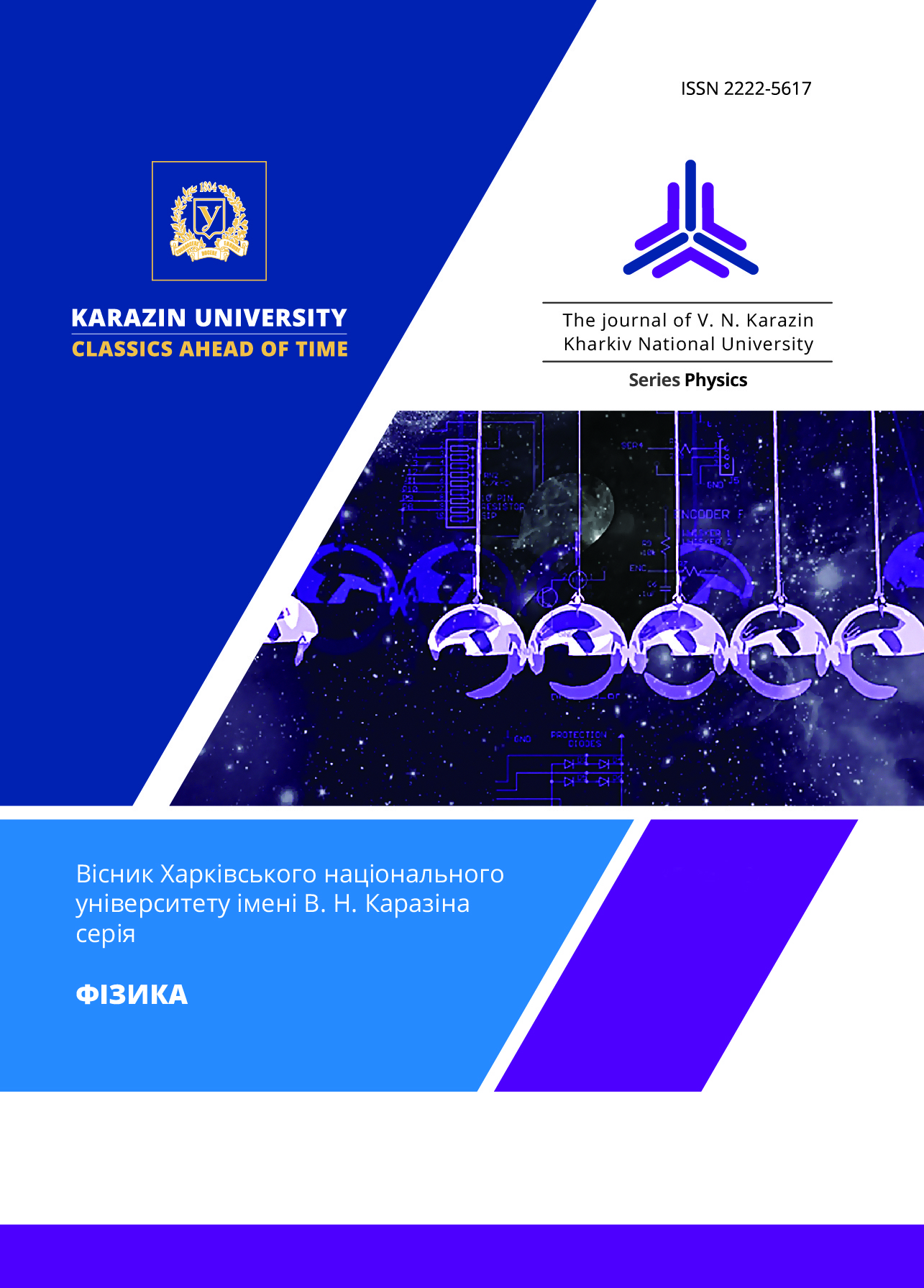Increasing the uniformity of characteristics of a plastic scintillator by reducing its internal stresses
Abstract
This paper presents the results of the study of internal stresses effect on the light collection uniformity in a plastic scintillator (PS) and setting conditions for obtaining long plastic scintillators with a low level of internal stresses.
Plastic scintillators based on polystyrene were used as test samples, produced in an air polymerizer from styrene monomer by radical thermoinitiated polymerization in an aluminum ampoule.
To reduce internal stresses in the polystyrene polymer base of the PS, scintillator samples were annealed at a temperature of 100 °С. After a 12 hours exposure, the samples were gradually cooled at a rate of 2.5 °C/h. To reduce the surface tension due to the adhesion of the PS to the walls of the polymerization mold, the inner coating of the polymerization mold with polytetrafluoroethylene was used. The values of internal stresses in the PS material before and after additional annealing of the samples, as well as in the case of using the anti-adhesive coating, were determined. The control of internal stresses was carried out using a PKS-250M circular polariscope. To calculate the internal stresses, the difference of main stresses in the flat plates of the plastic scintillator was calculated.
The dimensions of scintillator plates for evaluation of internal stresses are 10×50×300 mm. To measure the uniformity of the relative light output distribution along the long plastic scintillator, samples with dimensions of ø50x1000 mm were used.
The obtained data showed that additional annealing of plastic scintillator blanks and the use of anti-adhesive coating for the polymerization mold reduce the level of internal stresses in the plastic scintillator from 1.8÷2.9 MPa to 0.55÷1.0 MPa. The nonuniformity of the relative light output distribution along the long plastic scintillator with dimensions of ø50x1000mm was reduced to
ΔС ≤3 %.
Downloads
References
The Compact Muon Solenoid. Technical Proposal. CERNLHCC- 94-38, CERN-LHCC-P-1, printed in CERN, (1994), 450 p.
Design of Large Hadron Collider. CERN 91-03, printed in CERN, (1996), 270 p. Tile Calorimeter. Technical Design Report, CERNLHCC- 96-42, CERN-LHCC-P-1, printed in CERN, (1996), 320 p.
T.A.Nepokupnaya, A.A.Ananenko, A.Yu.Boyarintsev, A.A.Bobovnikov, A.V.Gektin, S.N.Kovalchuk, Yu.D.Onufriyev, V.Yu.Pedash. Functional Materials, 24, 678 (2017) https://doi.org/10.15407/fm24.04.678.
E. W.Fischer, M.Dettenmaier. J. Non- Cryst. Solids, 31, 181 (1978)
G.S.J Yeh, J. Macromol. Sci., B6, 465 (1972)
P. Debye, A. M. Bueche. J. Appl. Phys., 20, 518 (1949)
T. Kaino, M. Fujiki, K. Jinguji. Rev. Electr. Commun. Lab., 32, 478 (1984)
Y. Koike. J. Macromol. Sci., 22, 1367 (1989) https://doi.org/10.1021/ma00193a060
V.G.Zubakov, K.B.Bagdasaryan, A.B.Kochikyan, Isotropic scattering in amorphous polymers. Properties and
applications of optically transparent materials, L, (1984), 356 p. (In Russian).
P.M.Pakhomov, A.I.Zubkov, S.D.Khizhnyak. Macromolecular compounds, А, 40, 9, 1451 (1998). (In Russian).
B.V.Grinev, V.G.Senchishin. Plastic Scintillators, Acta, Kharkov (2003), 324 p. (In Russian).
Sina Ebnesajjad. Expanded PTFE Applications Handbook, Technology, Manufacturing and Applications, Imprint:
William Andrew. (2016), 300 p.
Z.Foppl, E.Monch. Praktische Spannungsoptik, Berlin: Springer, (1972), 300 p.








3.gif)
